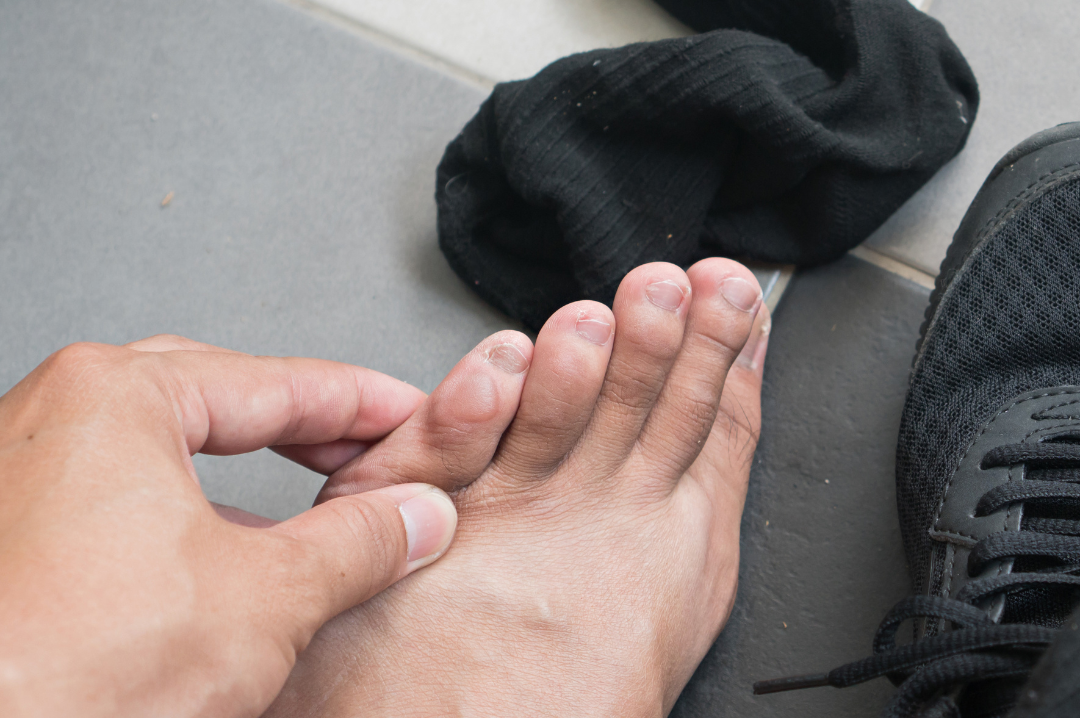blog
How Can I Prevent And Treat Blisters On My Feet?
April 12, 2023

Blisters: they’re an enemy that most of us are far too familiar with – often accompanied by a fantastic new pair of shoes that we were initially very excited about. Instead, we’re left in pain and uncomfortable, searching for anything we can place over the blisters to cover them up and stop the stinging.
Blisters develop when the skin on your feet rubs against shoes or other surfaces, leading to a buildup of fluid under the skin. Blisters can be caused by a variety of factors, including friction, pressure, or heat that damages the outer layer of skin. Specifically, ill-fitting shoes, repetitive rubbing movements, excessive moisture, and sunburn (less common for the feet, but still possible) are all culprits.
Preventing Blisters on Your Feet
Given the severe level of pain that these tiny but powerful bubbles can inflict on us, it’s always a good idea to take steps, where possible, to prevent them. This includes:
Choosing The Right Footwear
One of the best ways to prevent blisters on your feet is to wear comfortable, well-fitting shoes. Shoes that are too tight or too loose can cause friction and pressure on your feet, leading to blisters. Look for shoes with a wide toe box that allows your toes to move freely, and avoid shoes with high heels or pointed toes.
Break in New Shoes
New shoes can be stiff and tight, which can cause blisters on your feet. To prevent this, break in new shoes gradually by wearing them for short periods of time at first and gradually increasing the length of time you wear them. You can also try stretching the shoes before wearing them to help loosen them up.
Wear Moisture-Wicking Socks
Moisture can contribute to the formation of blisters on your feet. To prevent this, wear moisture-wicking socks that help to keep your feet dry. Avoid cotton socks, as they tend to trap moisture and can contribute to blister formation.
Use Protective Padding
If you have a spot on your foot that is prone to blisters, and you’re about to go for a long walk or hike, re recommend using protective padding to prevent friction and pressure. Moleskin or gel pads are good options for protecting your feet from blisters – and your podiatry clinic may have their own preferred recommendations, or even some available for purchase.
Treating Blisters on Your Feet
Once blisters have developed, there’s only one goal: to get them healed up as quickly as possible and to prevent further irritation that will worsen your symptoms and pain. Here are our tips for treating blisters at home:
Leave Blisters Intact
If you do develop a blister on your foot, it is important to leave it intact. The blister provides a protective layer over the damaged skin and helps to prevent infection. If the blister breaks, clean the area with soap and water, apply an antibiotic ointment, and cover it with a sterile bandage.
Use Compresses
To help relieve pain and reduce swelling, you can apply a cold compress to the blistered area. A bag of ice wrapped in a towel or a cold, wet washcloth can provide relief. You can also use a warm compress to help reduce pain and speed up healing.
Use An Antibacterial Ointment
If your blister has popped, apply an antibacterial ointment to help prevent infection. Cover the blister with a sterile bandage to keep it clean and protected.
Rest Your Feet
If you have a blister on your foot, it is important to rest your feet and avoid putting pressure on the affected area. This will help to prevent further irritation and allow the blister to heal. Absolutely avoid doing the activities that caused your blister to form in the first place.
Should You Drain A Blister?
Generally, we do not recommend popping blisters. This is because this ‘opens’ up the blister and makes it more vulnerable to further damage, as well as infections. However, in some cases, like when the blister is large or in an area like the back of your heel where you know it’s going to be exposed to pressure that is likely to take the top of the blister off anyway, it may be necessary to lance the blister.
To do this, take a clean, disinfected needle and poke the blister from the side to drain the fluid. Once the fluid is removed, the pressure will subside. Then, soak your feet for 15 to 20 minutes in lukewarm water with Epsom salts. Using Betadine to help dry up the blister will speed up the healing process, keeping it safely covered and protected. You should notice your blister and the area around it getting better over the following days. If it’s not, contact your podiatrist immediately.
Need Advice On Blisters, Or Help Treating Or Preventing Them?
Then our team is here for you. We’re proud to be Auckland’s leading podiatry team, and understand the impact that painful blisters can have on your daily life and in helping you meet your health and fitness goals. Book your appointment by calling us on 09 523 2333 or book online here.

